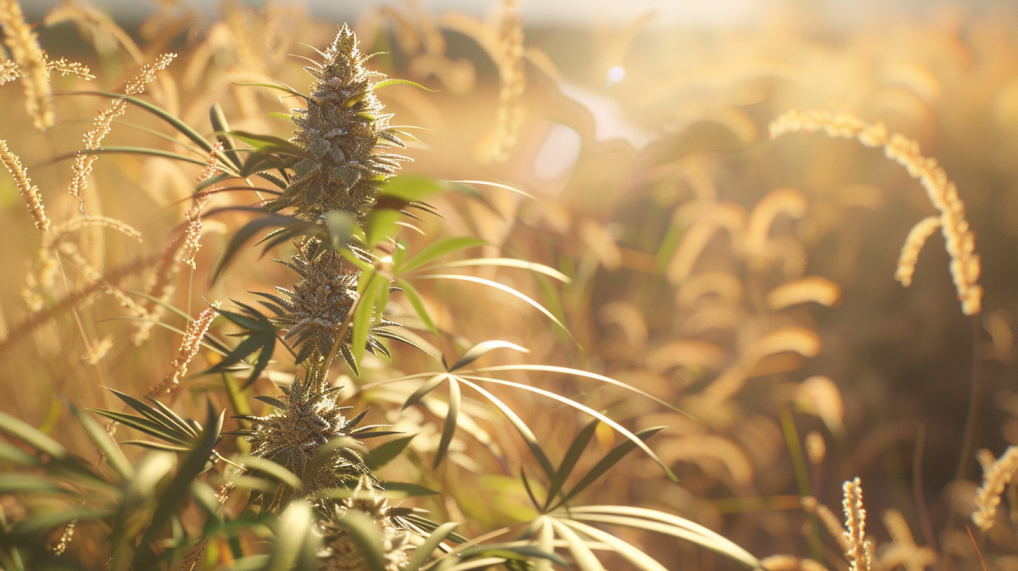Cannabis is an incredibly diverse plant with countless strains and variations. Two of the most popular and frequently debated groups of cannabis strains are Haze and Kush. If you’re a cannabis enthusiast or simply curious, chances are you’ve heard of these two types. But what exactly sets them apart, and why should you care? In this comprehensive guide, we’ll shed light on the differences between Haze and Kush, so by the end, you’ll know exactly which strain suits you best.
Quick overview of Haze vs. Kush for those in a hurry
Haze and Kush are fundamentally different types of cannabis. Haze is Sativa-dominant with uplifting, energetic effects and fruity aromas, while Kush is Indica-dominant, has a calming effect and features earthy aromas. They both differ in their origins, growth conditions, and medicinal applications.
Haze: The exotic classic
Originating from sunny California, Haze is a globally acclaimed group of Sativa-dominant cannabis strains. In the 1960s and 1970s, Haze was developed by a group of dedicated breeders known as the “Haze Brothers.” The fascinating Haze genetics originates from a mix of South and Central American, South Indian, and Thai Sativa landraces.
Kush: The robust Indica veteran
On the other hand, Kush is an impressive group of Indica-dominant cannabis strains that originated in the secluded Hindu Kush region. This remarkable mountainous area spans Afghanistan and Pakistan and is renowned for its unique and potent cannabis landraces. Kush strains are known for their sturdy structure and excellent adaptability to various climatic conditions.

Growth and Appearance: The cultivation differences between Haze and Kush
Haze: Tall plants with extended flowering time
Typically, Haze plants are tall and slender and can reach an impressive height of up to 300 cm. They have long, thin leaves and a loose bud structure. Due to their size, Haze plants require more space and time to grow. Their flowering time is longer than that of Kush plants and can range between 10 and 14 weeks.
Kush: Compact plants with short flowering time
In contrast, Kush plants grow smaller and more compact. They are bushy, with dense leaves and buds. Their flowering time is shorter, making them very popular among growers. The flowering time of Kush strains usually ranges between 7 and 9 weeks.
Titillating the Senses: Flavour and Aroma
Haze: A Symphony of Fruity and Floral Hues
When you light up a Haze strain, you’re in for a treat. These varieties are famous for their often fruity, floral, and sweet overtones. Expect bursts of citrus, berries or tropical fruits to dance on your tongue. The scent profile of Haze strains leans towards the earthy side, with hints of pine and spices. This unique blend of tastes and smells is what endears them to many cannabis enthusiasts.
Kush: Robust Earthiness and Spicy Undertones
Kush strains, on the other hand, stand out with their robust earthy, spicy and sometimes sweet undertones. You might also detect connotations of pine, sandalwood or citrus fruits. The flavour profile of these Kush strains is typically hearty and rich, making them highly sought-after by many cannabis aficionados.
Effects and Medicinal Uses
Haze: Energizing and Creativity-Boosting Kick
Most Haze strains are predominantly Sativa-dominant, providing an uplifting, creativity-enhancing and energetic effect. They are well-known for inducing feelings of euphoria and alertness, making them perfect for daytime use or social gatherings. In terms of medicinal uses, Haze may aid in alleviating depression, stress, fatigue and loss of appetite.
Kush: Relaxation and Pain Relief
Kush strains lean towards being Indica-dominant, which translates into relaxing, calming and pain-relieving properties. They are celebrated for their potent physical effects that can be beneficial in treating sleep disorders, chronic pains, anxiety and muscle tension. Thanks to their calming effects, Kush strains are often enjoyed in the evenings or for stress relief.

Popular Haze and Kush Strains
Famed Haze Varieties
Among the Haze strains that have earned their fame are:
- Amnesia Haze: An uplifting and potent strain bursting with citrusy flavours.
- Super Silver Haze: An award-winning strain with sweet, earthy notes and a surge of creativity.
- Jack Herer: A popular strain named after the activist of the same name, boasting refreshing pine aromas.
Renowned Kush Varieties
Some of the most recognized Kush strains are:
- OG Kush: One of the most famous and potent Kush strains with a unique earthy citrus aroma.
- Bubba Kush: A relaxing strain known for its sweet, earthy flavours.
- Hindu Kush: A pure Indica strain originating from the Hindukush region, appreciated for its soothing and calming effects.
Wrap Up
The distinctions between Haze and Kush are manifold, ranging from their origin, growth conditions, appearance to their flavour and aroma profiles and their effects. Understanding these differences helps you to make an informed decision about which strain best suits your needs and preferences. There are also numerous hybrid strains featuring both Haze and Kush genetics, offering a blend of features from both types.
By expanding your knowledge about Haze and Kush, not only can you enhance your cannabis experience but also deepen your communication with other cannabis enthusiasts. Cannabis is an incredibly diverse plant and appreciating the distinctions between Haze and Kush allows you to truly savour the diversity and beauty of this plant.
Haze strains are Sativa-dominant with uplifting effects and fruity aromas, while Kush strains are Indica-dominant with calming effects and earthy aromas.
Haze originated in California, derived from genetics of South and Central American, South Indian, and Thai landraces. Kush originates from the Hindu Kush mountain range between Afghanistan and Pakistan.
Haze plants are tall with a longer flowering period, while Kush plants are more compact with a shorter flowering cycle.
Yes, Haze is often used for its energizing and creativity-enhancing effects, helping with depression and fatigue, while Kush is valued for its relaxing effects, useful for pain and stress relief.
Popular Haze strains include Amnesia Haze and Jack Herer, while famous Kush strains include OG Kush and Bubba Kush.
Haze strains typically feature fruity, floral, and sweet notes, whereas Kush strains offer robust earthy, spicy, and sometimes sweet undertones.









